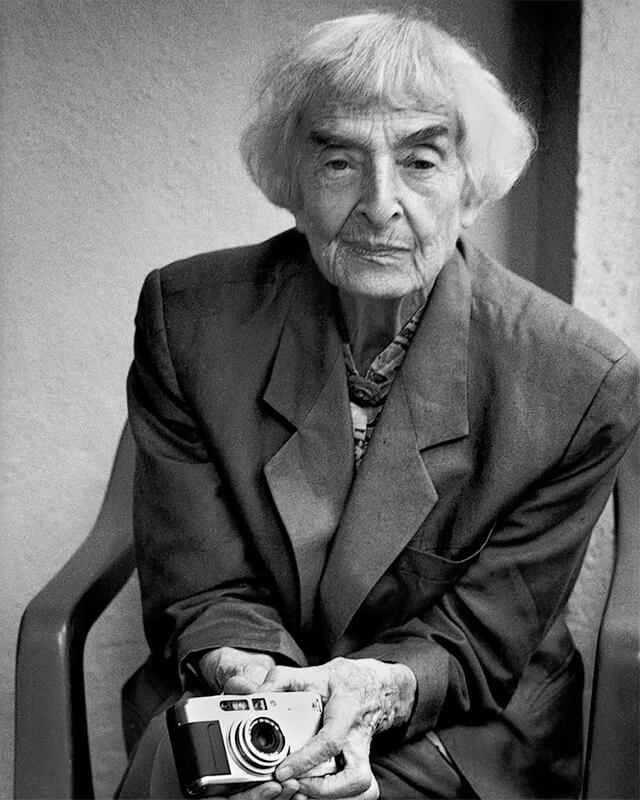Ellen Auerbach was a German-born American photographer remarkable both for her avant-garde photography and for her innovative and successful ringl+pit studio, where she and fellow artist
Grete Stern signed all their work collaboratively.
Ellen Auerbach was born Ellen Rosenburg in Karlsruhe, Germany. After sculpture courses in Karlsruhe and Stuttgart, she studied photography with
Walter Peterhans at the Bauhaus school in Berlin. In 1929, she founded ringl+pit, an advertising and portrait studio, with her friend Grete Stern. The unusual title was derived from the nicknames they used as children. When Hitler rose to power, Auerbach emigrated with her future husband to Tel Aviv. There she opened a children's portrait studio named Ishon. Following the outbreak of the Abyssinian War, Auerbach moved to London, where she was reunited with Grete Stern. Together they worked on a series of portraits of
Bertolt Brecht.
By 1937, Ellen and Walter Auerbach had married and moved to the United States, eventually settling in New York City. Ellen began to experiment with new photographic techniques, worked for
Time and Columbia Masterworks on a freelance basis, and taught photography at a junior college. In 1955 Auerbach traveled to Mexico with
Eliot Porter and the two produced a powerful body of work documenting Mexican churches. The series, printed primarily in color, explores the religious traditions and ceremonial icons of a fading era in Mexican religious history. Auerbach continued to travel and photograph extensively. At the age of sixty, she began a second career as a child therapist.
Ellen Auerbach's travels provided her with a kaleidoscope of people and places through which to develop her personal visual language. She believed that photography allows for the use of a metaphorical
"third eye" which allows the artist to capture not only what exists on the surface of an image, but also to capture the essence of the subject that lies beneath that surface.
Source: Robert Mann Gallery
